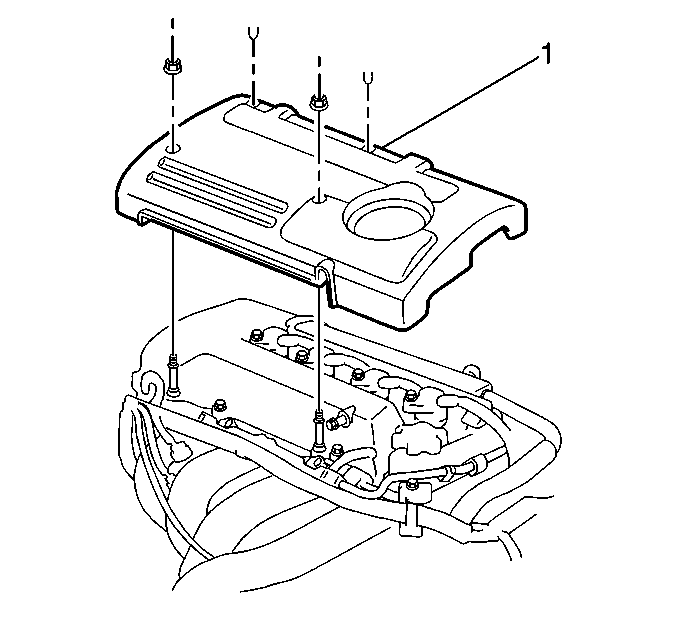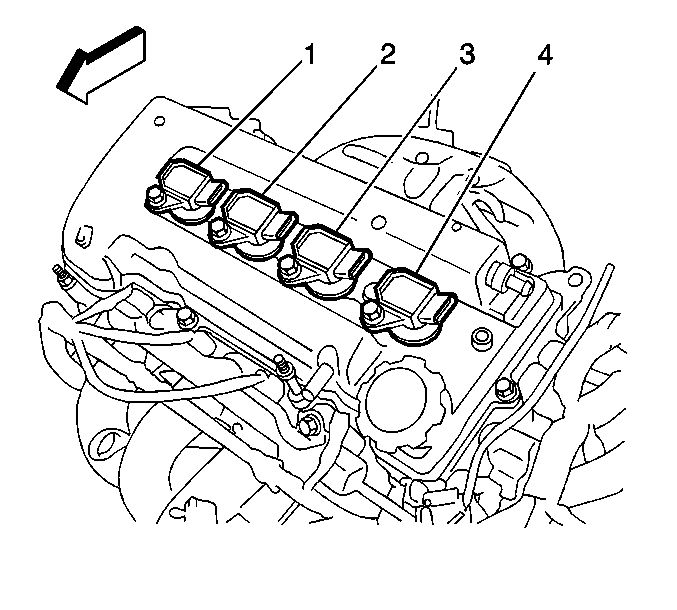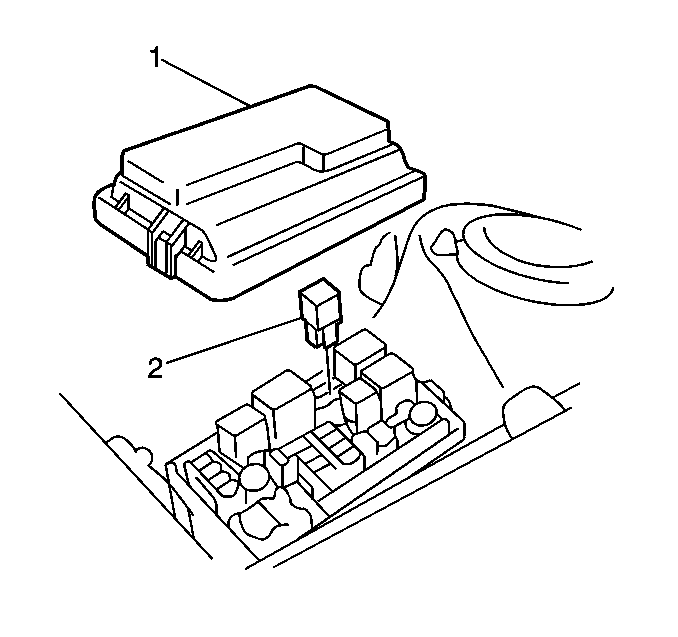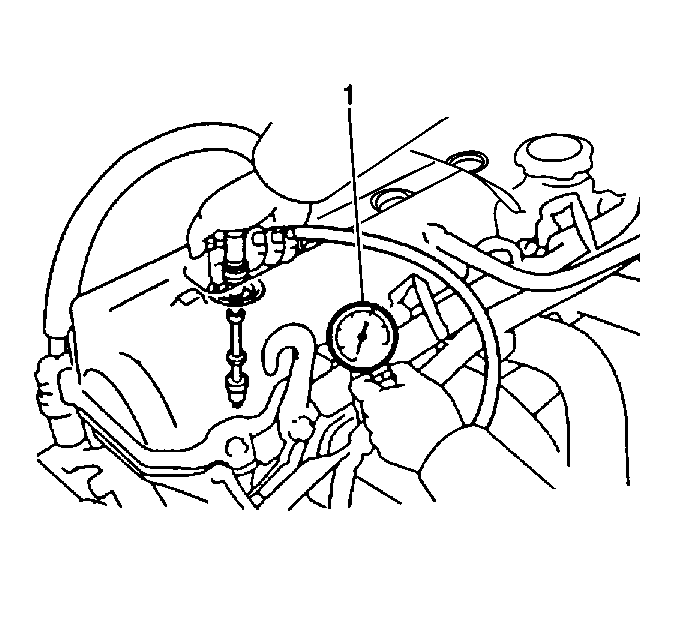For 1990-2009 cars only
Perform a compression test in order to determine the cylinder compression pressure. Use a compression test in order to diagnose lack of power, excessive oil consumption, or poor fuel economy.
- Verify that the battery is fully charged.
- Remove the engine cover (1) from the engine.
- Remove the four ignition coils (1-4) from the cylinder head cover.
- Remove the spark plugs from the cylinder head.
- Remove the EFI Main Relay (2) from the Fuse/Relay Block 1.
- Install a compression gage into a spark plug hole.
- Depress the clutch pedal (on vehicles that are equipped with a manual transmission).
- Depress the accelerator pedal to the floor for a wide open throttle.
- Crank the engine through four compression strokes for each cylinder being tested.
- Measure the highest pressure reading on the compression gage.
- Repeat the compression test procedures for the remaining three cylinders.
- Remove the compression gage from the engine.
- Install the four spark plugs.
- Install the four ignition coils (1-4) to the cylinder head cover.
- Install the engine cover (1).
- Reconnect the EFI Main Relay (2) to the Fuse/Relay Block 1.
- Inspect for the following conditions:
Notice: This engine is equipped with an aluminum cylinder head. Allow the engine to cool before removing spark plugs. Removing the spark plugs from an engine at operating temperature may damage the spark plug threads in the cylinder head. Also be sure to clean any dirt or debris from around spark plug holes prior to removing spark plugs.
Important: The engine should be at room temperature.




Important: The maximum allowable compression pressure difference between any two cylinders is 100 kPa (15 psi).
| • | The standard compression pressure is 1,500 kPa (218 psi). |
| • | The minimum allowable compression pressure is 1,000 kPa (145 psi). |



| • | Normal operation |
| • | The pistons, piston rings and valves are operating normally if the cylinder compression pressure increases quickly and evenly to the compression standard (1,500 kPa [218 psi]). |
| • | Faulty piston rings |
| • | The following actions indicate that the piston rings are faulty: |
| - | The cylinder compression is low on the first stroke. |
| - | The cylinder compression increases on the following strokes but does not reach the compression standard. |
| • | Faulty valves |
| • | The following actions indicate that the valves are faulty: |
| - | The cylinder compression is low on the first stroke. |
| - | The cylinder compression does not increase on the following strokes. |
